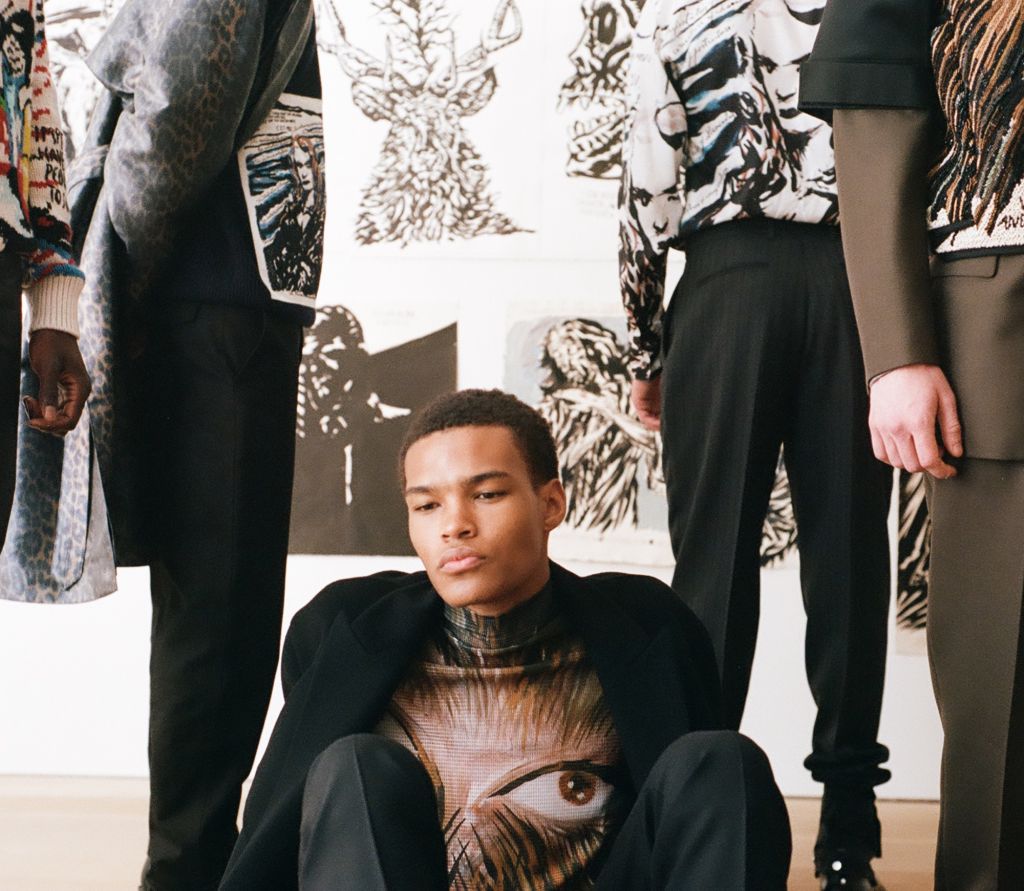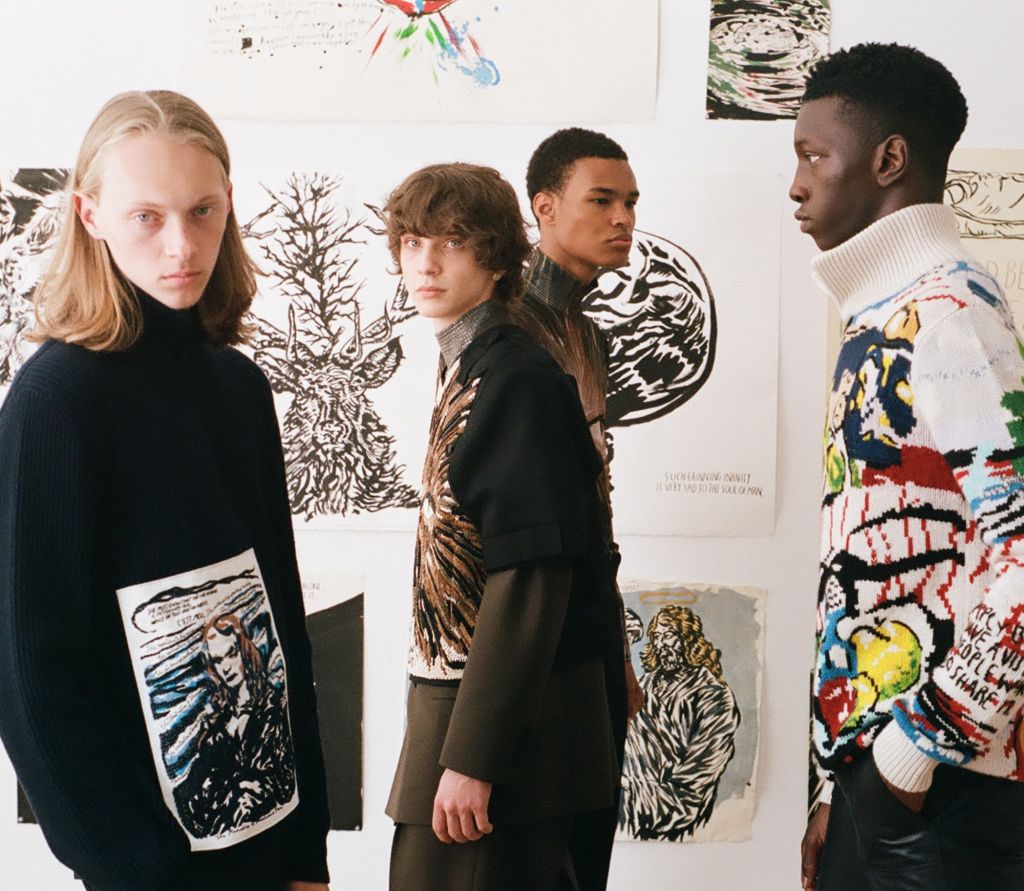When Kim Met Raymond
For Dior Men artistic director Kim Jones, collaborating with artist Raymond Pettibon on the Fall/Winter collection was a “dream.”

A moving conveyor belt replaced the traditional runway at Kim Jones’s Fall/Winter show for Dior Men. Models stood stoically still, as if sculptures on pedestals, before they disappeared into the darkness of an infinite runway. It was almost as if Jones translated the theatrical nature of the classic runway format into performance art. The context immediately shifted, and for good reason. This season, Jones collaborated with artist Raymond Pettibon, widely known for his pen- like drawings and album artwork for bands like Black Flag and Sonic Youth. As models rolled by, all eyes were fixed on the garments. “The inspiration [for the collection] comes from the artworks of Raymond, from the more romantic part of his work and tying that into the loves of Monsieur Dior, which was the nature and the romance of the House,” explains Jones. The collection includes items emblazoned with works handpicked by the designer, as well as original prints. “It was a very easy process,” Jones elates. Having discovered Pettibon’s work as a teenager, he says, “It has been a dream to work with him.” Ahead of the artist’s Fall show at the newly opened David Zwirner Paris gallery, Raymond Pettibon recalls the creative exchange.

VMAN Let’s start from the top. How did this collaboration with Kim Jones come about? I understand you were also working on a series of leopard drawings and prints for Dior Men?
RAYMOND PETTIBON I believe it was Stella Schnabel who set it up through David Zwirner Gallery. The leopard drawings were suggested by Kim Jones. I was happy for the chance to work with them. I’ve never felt that my work has to be confined to the white cube of the museum or gallery world.
VMAN Tell us about the specific works used in the collection. I understand some of these have never been exhibited before.
RP Some go back a while, some were not done specifically for the project. Ultimately, it came down to Kim Jones’s choice and sensibility.
VMAN What was the dialogue like with Kim? What was this exchange? How would you categorize the works that Kim selected?
RP My works were like any of my pieces that would appear in one of my books or shows. That is, they were not designs or illustrations. It was Kim Jones’s inspiration to make fashion out of them.
VMAN What was it like seeing your works reinterpreted in embroideries? Once applied to clothing, do you feel like the messaging of the works shifts at all?
RP I don’t mind seeing my work displayed [in contexts] other than gallery walls; that can be tattoos or fashion, walls, street art or telephone poles. In fact, I rather like to see it in unexpected places.
VMAN Tell me a bit about your process. How do you select phrases and words to match imagery?
RP It’s an adjunctive, associative process I’ve developed over many, many years. It comes out of literature, of writing, reading, rewriting, editing and wedding [those influences] to imagery. Images can come from any source whether imagined, abstracted, borrowed, found; from nature or real life.
VMAN I’m also curious to know more about your beginning in the punk rock scene. Tell me a bit about this time.
RP I never did drawings for punk; my brother happened to be in a punk band and had a punk record label. Since I made art and he didn’t have a massive in-house art department to work with, he asked me to do some of his covers and flyers.
VMAN What do you feel your experience in the punk music scene brings to your works?
RP Nothing.
VMAN What do you hope the viewer takes away from your works? Are you hoping for a particular reaction?
RP That’s undecided. Once a work leaves my hands I don’t have any expectations. I’ve never thought of it—there is no hectoring on my part for the proper way of reading or seeing my work.

“The inspiration for [the collection] comes from the artworks of Raymond, from the more romantic part of his work and tying that into the loves of Monsieur Dior, which was the nature and the romance of the house. It was a very easy process. It has been a dream to work with him.” — Kim Jones.
Discover More
